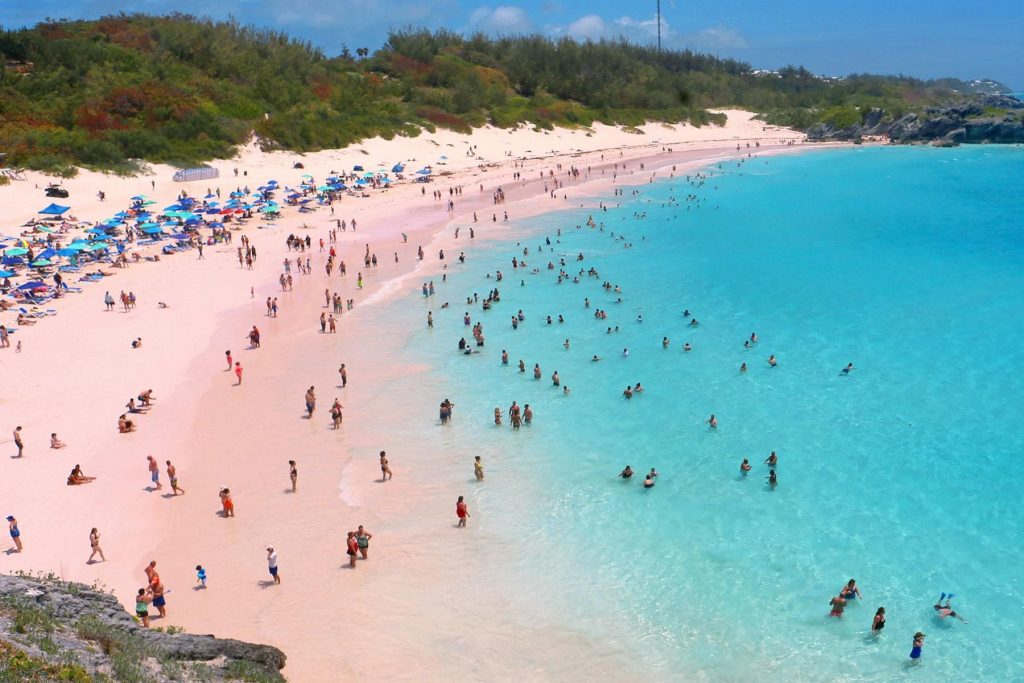At the heart of Bermuda’s pink sand beaches is the abundance of coral reefs surrounding the islands. Coral reefs are vibrant marine ecosystems built by tiny creatures known as coral polyps. When these polyps die, they leave behind a hard calcium carbonate structure, which eventually contributes to the formation of sand. As the reefs erode and break down due to natural processes, the calcium carbonate from the corals mixes with sediment and other organic materials.
A key player in creating the pink hue of the sand is an organism called foraminifera, single-celled microorganisms that typically have shells made of calcium carbonate. Some species of foraminifera are pink or red in color due to the pigments they contain. When these organisms die, their shells accumulate along with the broken coral and other sediment. It is this rich concentration of foraminifera shells that gives Bermuda’s sand its distinctive pink tint.In addition to foraminifera, the sand’s composition includes finely crushed coral fragments and the remains of various shellfish. The intricate interplay of these materials adds to the grainy texture of the sand while contributing to its overall color. The erosion of these components occurs due to wave action, which grinds them down into smaller particles, creating the soft sand that visitors enjoy.
The formation of pink sand is, to some extent, influenced by the environmental conditions of Bermuda. The island’s location in the Atlantic allows for warm waters that support healthy coral reefs and abundant marine life. Additionally, consistent wave action contributes to the gradual erosion process that creates fine, powdery sand.Another factor is the unique geology of Bermuda. The island is composed of limestone, which interacts with the organic processes taking place on the surface. The limestone provides minerals that further enhance the composition of the sand, contributing to its pink hue.Visitors to Bermuda are often enchanted by the soft pink hue of its beaches, which range from subtler tones to vibrant shades depending on time of day and weather conditions. Popular beaches such as Horseshoe Bay and Elbow Beach showcase the stunning beauty of pink sand and have become renowned destinations for travelers seeking a picturesque beach experience.The sand’s unique color and texture not only create breathtaking vistas but also provide an enjoyable experience for beachgoers. Its fine, soft nature makes it ideal for sunbathing, and the gentle slope of the beaches creates a safe swimming environment for visitors of all ages.
As with many natural wonders, it is essential to consider environmental protection efforts to preserve Bermuda’s pink sand beaches. The island’s delicate ecosystems are threatened by climate change, pollution, and tourism pressures. Local conservation initiatives play a crucial role in promoting sustainable tourism and protecting both the coral reefs and the marine life that contribute to the formation of the pink sand.Bermuda’s pink sand beaches stand as a testament to the intricate and fascinating processes of nature. From the corals and foraminifera that create the sand to the warm waters that nurture these ecosystems, the formation of pink sand reflects the delicate balance of geological and biological interactions. Whether you’re walking along the shores, gazing at the vibrant hues, or simply enjoying the sun, the pink sands of Bermuda offer a unique and unforgettable experience that showcases the beauty of our planet.


More Stories
Preserving the Root- The Story of the Oldest Bermuda Marijuana Strain
Why Bermuda Air Should Be Your Go-To Choice for Our Islands Travel
“Bermuda’s AI Adventure For Building a Cool Tech Island by 2060!” Bermuda’s Super Exciting Future Ahead!